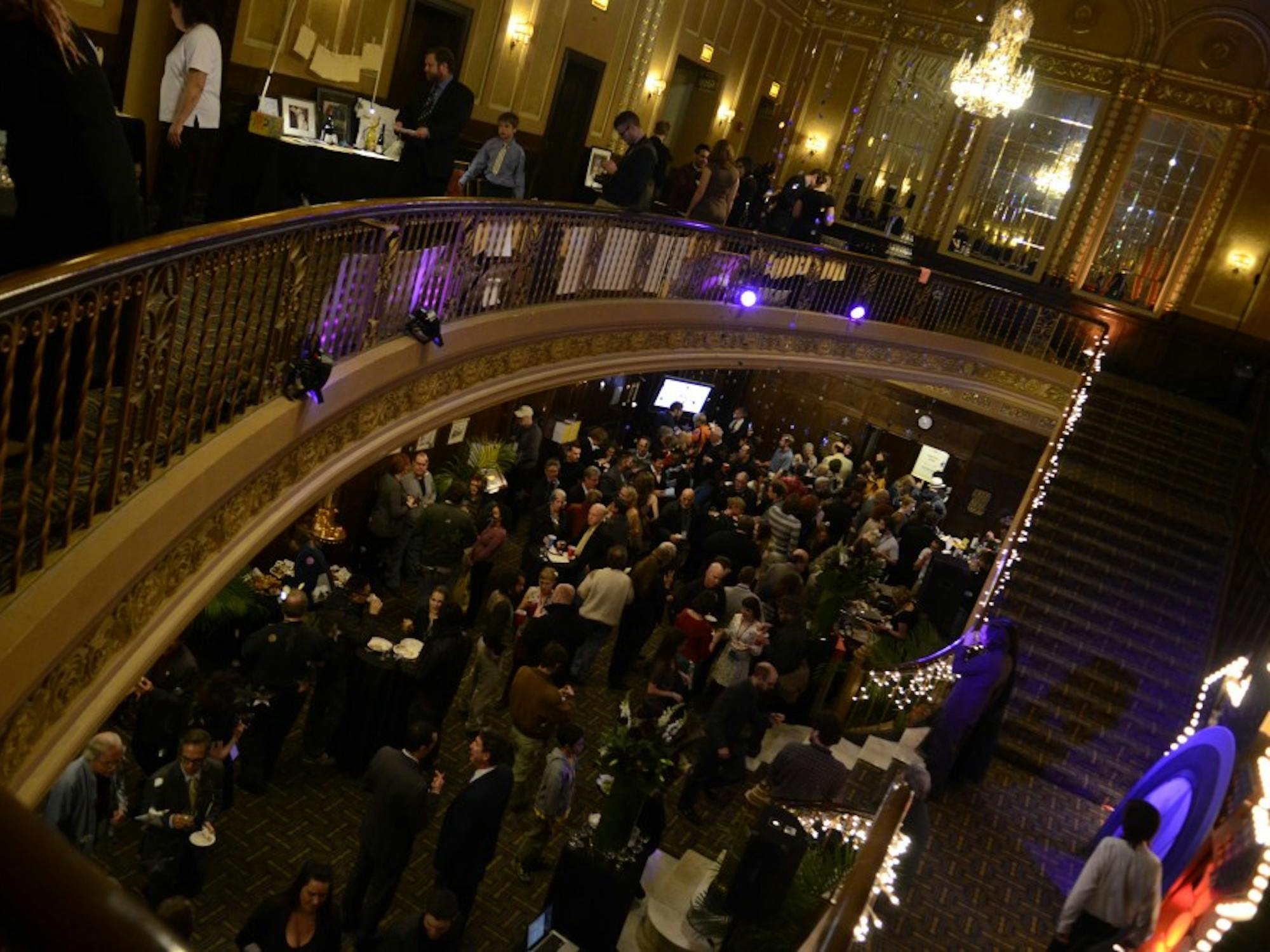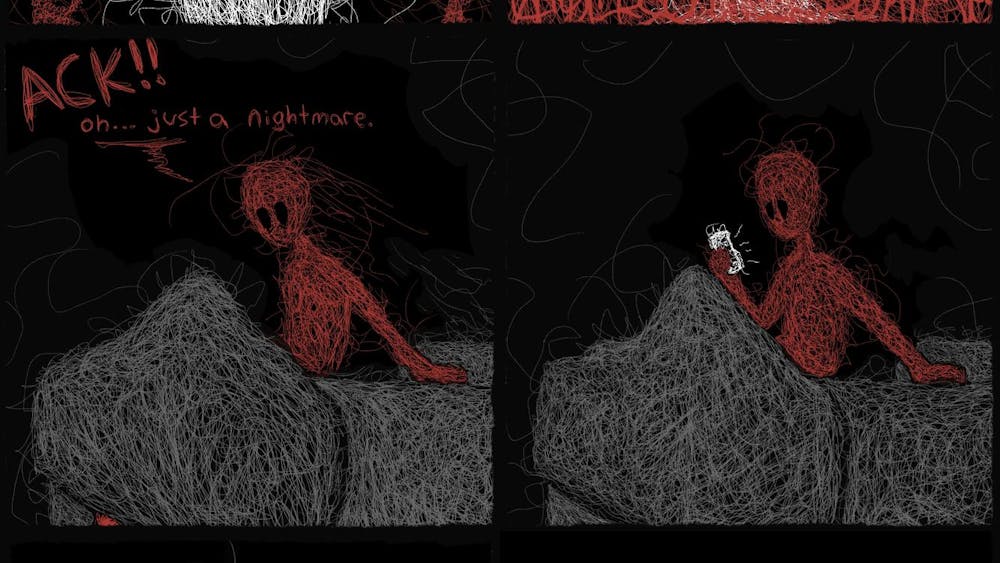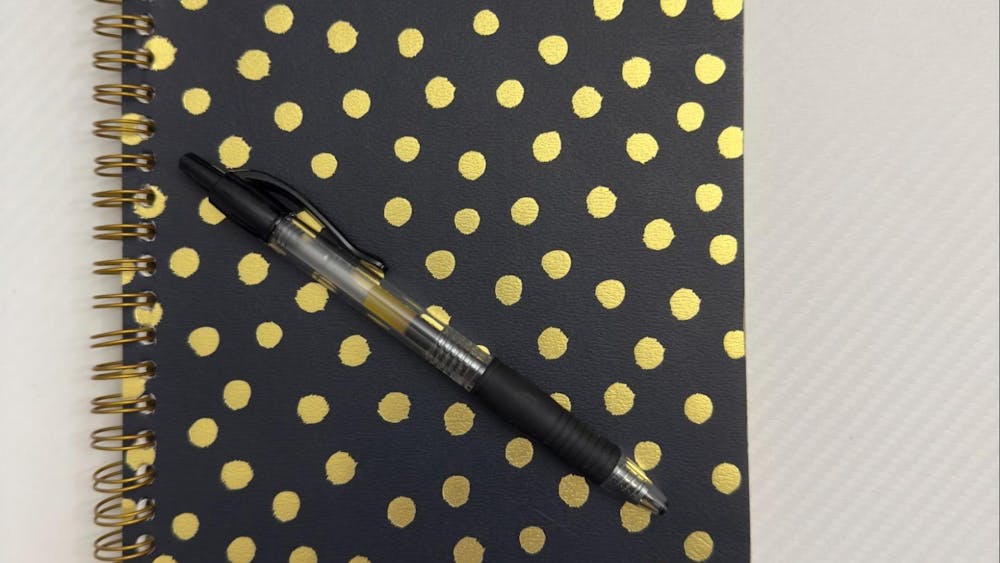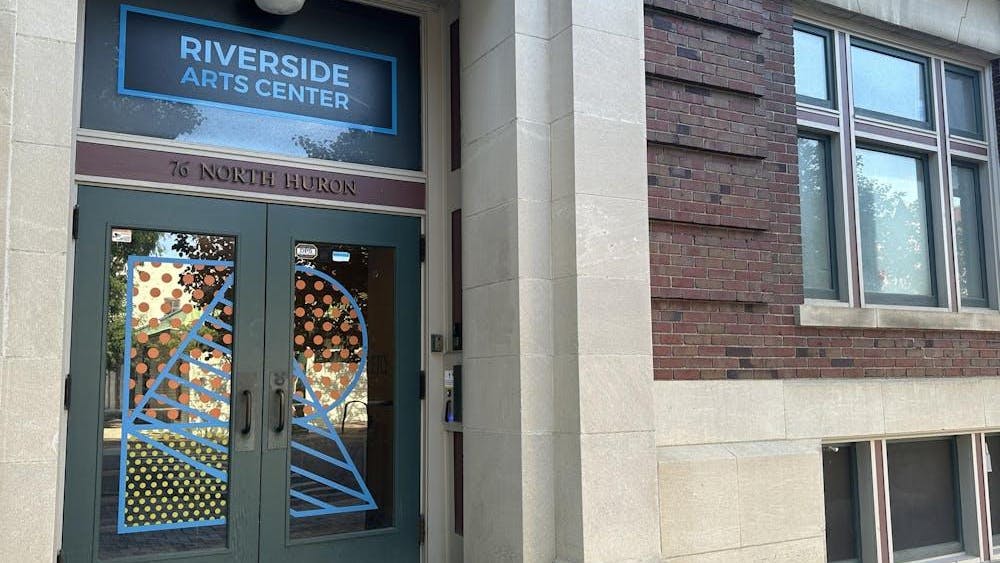“This festival has never been about one person, this festival is very much about the community and the artists,” Donald Harrison, executive director of the Ann Arbor Film Festival, said during Opening Night at the Michigan Theatre on March 27.
The AAFF, celebrating its 50th annual festival this year, is one of the oldest film festivals in the world.
It has been internationally recognized as one of the most important independent and experimental festivals in the world.
The festival itself presented over 200 different films this year from many different genres, reaching from narrative to documentary to animation.
The Ann Arbor Film Festival is “steeped in a rich tradition of ground-breaking cinema,” according to the website, aafilmfest.org.
Founded by George Manupelli in the early 1960s, the festival was created to showcase works from artists and filmmakers all over world for those
who can appreciate the independent and experimental.
Opening night offered an energetic and enthusiastic atmosphere right after entering the doors of the Michigan Theatre, which has been the home of the AAFF since 1980. Once the crowd packed into the theatre after the reception, the festivities began.
Donald Harrison, executive director of the AAFF, was introduced onstage, looking very debonaire in a suit and bow tie.
“Welcome to the 50th!” he proudly said to the viewers.
He gleamed with pride to have reached a 50th celebration of the festival, and began his thanks to all those involved, including Program Director David Dinnell, Operations Manager Maria Feldman and Volunteer Coordinator Gabby Follett.
“The Ann Arbor Film Festival has only been around this long because of the many people it is comprised of,” Harrison said.
“The artists are the ones who keep inspiring us to do this year in and year out. Artists who are from all over the world, from all different nationalities, refracting the world through their lenses.”
Harrison went on then to thank the major contributors to the AAFF, which included Vitamin Water, Vimeo — a platform from young artists interested in sharing the work they have created — and The Academy of Arts and Sciences, who helped majorly fund the festival.
The festival also received support from the community, including the University of Michigan’s School of Art and Design, Washtenaw Community College, and Eastern Michigan University.
Harrison also expressed his gratefulness to the Awards Jury for the 50th celebration, which featured Philadelphia-based artist and filmmaker Peter Rose, film and video artist Michael Robinson, and film curator at Pacific Film Archive Kathy Geritz.
The Awards Jury is responsible for viewing and judging the “Films in Competition.” The AAFF presented over $22,000 in awards this year to filmmakers through cash and film stock/processing.
When Harrison said there was no amount of thanks that would actually suffice, he then introduced the founder, George Manupelli, to the stage.
Manupelli shuffled onto the stage smiling at the crowd, carrying a thick stack of note cards. Manupelli made jokes all through his speech, even pointing out that on one of his many note cards the word ‘Hi’ was written in giant letters to remind himself to address the audience. After fumbling through the cards he began.
“I was 30 years old when I started the film festival, I directed it for 20 years, and now it’s 50 years old and I am 80. And there’s one advantage to me starting it when I was 30, because if I had started it when I was 50, I would be 100 years old,” he joked.
“Some of you think I don’t look 80. I was walking through the lobby and a woman asked me for my autograph. So I signed her program book, and she looked down at it, then looked up at me disappointedly and said ‘This says George Manipelli’ and I said ‘Yea, that’s me’. Then she said ‘Oh, I thought you were Julia Child,’” he giggled, telling his silly fake anecdote.
“Who writes this stuff?” he asked the audience immediately after telling the story, making them to laugh.
In his last few words on stage, he decided that it was only right to celebrate the festival by wishing it a Happy 50th Birthday by singing “Happy Birthday, Dear Festival.” The crowd joined in right away.
After he exited the stage, Harrison again took the microphone, only to declare that it was time to watch some films. This caused the crowd to roar in excitement.
The films featured on Opening Night were some of the festival’s best, featuring works such as the late Karen Aqua’s “Taxonomy,” a film grounded in theory that the animal, vegetable and mineral kingdoms are ever-changing, Travis Wilkerson’s “Pluto Declaration,” a film that begged society to bring back Pluto as a planet using hilarity, and Don Hertzfeldt’s “It’s Such a Beautiful Day,” the third and final installment in his trilogy about a stick figure named Bill who is struggling with life and his memory loss.
The night closed out with roars and whistles from the audience to show their appreciation for the film’s shown and the company kept at the AAFF.
Day two of the six-day festival included screenings of “Music Videos in Competition,” a “Student Film Showcase,” the first showing of the “Films in Competition” and “Out Night With Barbara Hammer.”
“Films in Competition 1” featured films such as David Sherman’s “Assassination in Dreamland” and Craig Baldwin’s “RocketKitKongoKit,” with both filmmakers in attendance. Following the screening, both filmmakers took the stage for a short Q and A with members of the audience.
Sherman’s film was about the 25th president’s assassination and was voiced over by a female computer voice. When asked to explain the choice for the computer voice, he answered by sharing that he believed it was an extension of technology in that time.
“History changes through technology and sometimes we need some way to translate that in case it doesn’t translate so seamlessly,” he explained.
Baldwin’s film told the history of the post-colonial Congo, pieced together to look like an old-style “How To” video from the late 50s.
“I wasn’t so much interested in preserving and conserving history, it was mostly about what’s at stake, then as well as now,” Baldwin explained.
Following the showing of the first few competition films was “Out Night with Barbara Hammer,” a series of films centered around the sexual and LGBTQ communities. Barbara Hammer herself has been working for 30 years and has created over 80 films focusing mainly on taboo subjects, not afraid to confront uncomfortable subjects.
On the third day, “Bruce Baillie’s Retrospective 1,” the first in a three-part screening at the AAFF, hit the screen in the prime time hours.
The screenings of his 1960s films were supported by the Academy of Arts and Sciences.
With the filmmaker in attendance, he made a few brief comments about his films, but the majority of his time spent on stage was used to thank the AAFF for having him and thanking the Academy.
“This is an amazing event that we are all sharing, in just an amazing theatre,” he said to the audience.
Showing right after the retrospective was “The Strawberry Tree,” a film done in both documentary and narrative styles to tell the story of one of Cuba’s last fishing villages.
The filming of the documentary took place where Columbus first set anchor in his 1492 discovery of the New World.
Friday, which was the fourth day out of six, was much more vibrant than the two previous days, with a fuller theatre that night.
The fourth installment of the “Films in Competition” featured films done by Gus Van Sant, who directed “Good Will Hunting.”
Filmmakers Jodie Mack (“Point de Gaze”) and Robert Todd (“Undergrowth”) were in attendance, also doing Q and A after the show.
Todd’s “Undergrowth” was a tale of what a Blind Owl experiences in just a few moments during its normal day.
He explained that it felt as though he was interviewing the Blind Owls, and they decided to participate.
Mack’s film “Point de Gaze” was explained by her as a narrative of the color wheel using a series of photographs of lace of all different colors and patterns.
“The film features about 6,500 photographs of lace,” she explained, expressing just how many were needed to create this five-minute piece.
The weekend screenings consisted of more “Films in Competition” as well as the “Animated Films in Competition” and a midnight showing of George
Lucas’ “THX 1138,” which was shown at the 6th AAFF in 1972, one of his most famous student films.
The other two installments of “Bruce Baillie’s Retrospective” were shown as well, along with “In Praise of Shadows,” a screening of Japanese Avant-Garde films from the 1990s and 2000s.
Sunday’s closing program was the “Award Screenings” both 1 and 2, a showing of all of the award winners at this years festival. The winner of the highest prize of $3,000, or the Ken Burns Award for Best of the Festival was presented to “Lack of Evidence” directed by Hayoun KWON.
The winner of the Lawrence Kasdan Award for the Best Narrative Film, worth $1,000, was ‘Palaces of Pity” created by Daniel Schmidt and Gabriel Abrantes. The Award for Best International Film went to a film about a home in California that used to host terrorists, called “Untitled.”
The Kodak/Colorlab Award for Best Cinematography went to two of Robert Todd’s films, one being “Undergrowth,” which was previously mentioned, and “Within.” For a listing of all the award winners, visit the Ann Arbor Film Festival website.
The 50th Ann Arbor Film Festival was an experience unlike any other. It was a celebration of the experimental and independent filming styles and will live on for many years.
For more information on the AAFF or on submitting a film, visit their website at aafilmfest.org.










